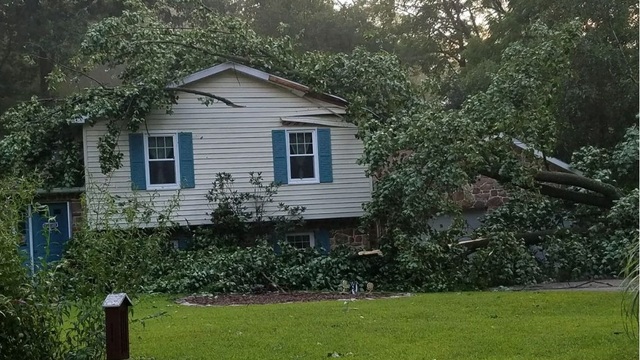It’s important to keep a close eye on your property and any storm damage that may occur to it. However, seeing the damage is not always a simple task. It’s important to understand the basics about what damage can look like and also understand that a professional is always your best answer is assessing the damage.
Hail Damage
Shingles can react differently when struck they are stuck by hail. For example, hail damage to asphalt and composition shingles can look very different than hail damage to wood shingles. It is important to know the different effects of the damage to properly identify whether or not you have roof damage from hail.
Asphalt and Composition Shingles Hail Damage
– Random damage with no detectable pattern.
– Hail hits that are black in color.
– Loss of granules, which may expose the roof felt.
– Asphalt and/or mat that appears shiny.
It is important to note however, that there are many other types of damage to shingles that can be mistaken for hail damage. For example, exposure to inclement weather and sunlight makes shingles brittle and gives them an aged appearance. This type of damage is normal wear and tear of shingles, which is sometimes misidentified as hail damage. Furthermore, other types of normal wear and tear may include blistering, cracking, granule loss, flaking and algae. Lastly, mechanical imperfections in shingles can also be mistaken for hail damage.
Wind
Excessive wind speeds causes damage in primarily two ways: First, the wind may “peel” up portions of the roof, particularly the edges of a roof. As the curling occurs, subsequent wind storms may continue to peel portions of the roof allowing driving rains to get under the shingles.
The other concern with excessive wind is damage sustained to a roof by debris. For example, the roof may appear clear of debris, but during the storm a large tree limb may have struck the roof and blown away. This flying debris may cut or puncture the roof.
There are several common signs of roof damage:
– Missing shingles.
– Cracked/Broken slate, tile, or concrete shingles.
– Asphalt granules collecting in gutters or downspouts.
– Leaks in your roof or ceiling.
– Dents on gutters, vents, or flashing.
– “Bruised” or dented shingles.
What We Have to Offer:
Association Reconstruction is fully aware of the potential dangers that may arise from Minnesota storms. That being said we are prepared to handle these situations if they arise by offering storm damage monitoring which puts you on our storm watch radar. From there, we will come to your house to search for potential damage whenever a storm rolls through your neighborhood. Here is our storm damage monitoring process:
Step 1 – You schedule a time for Association Reconstruction to physically inspect your property.
Step 2 – From our inspection, a baseline is established regarding the current condition of your property.
Step 3 – If storm damage exists we learn what your insurance deductible is and create a detailed report which lists the reasons why we do or do not suggest filing an insurance claim.
Step 4 – Your property is added to our Monitoring Program. This means we stay current with any storm or weather conditions in your area that may adversely affect your property. If such an event occurs, we quickly arrive onsite to inspect your property for damage.
Please contact Association Reconstruction to learn more about how we can help.

